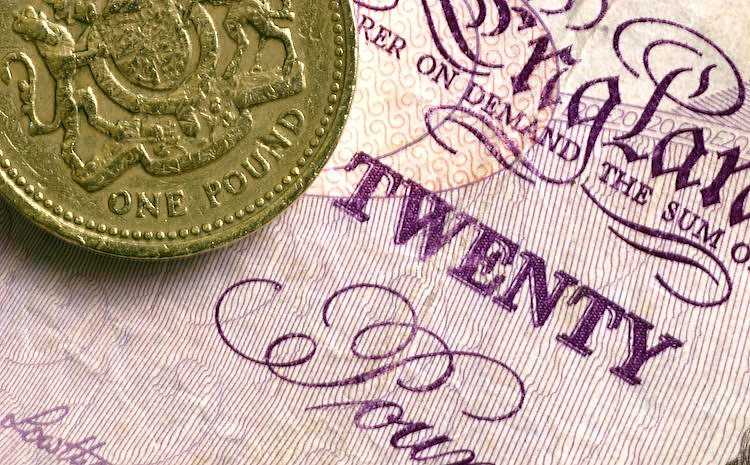Pound Sterling slumps as BoE Mann votes for holding key rates steady at 5.25%
- The Pound Sterling drops sharply from 1.2800 after the BoE keeps interest rates unchanged at 5.25%.
- Eight out of nine BoE's MPC members have voted for holding interest rates at their current levels.
- The US Dollar rebounds as the Fed painted an upbeat US economic outlook.

The Pound Sterling (GBP) witnesses a sharp sell-off in Thursday’s early New York session as eight out of nine members led-Monetary Policy Committee (MPC) of the Bank of England (BoE) has voted to keep interest rates unchanged at 5.25% for the fifth time in a row. The BoE was widely expected to announce a steady interest rate decision. However, BoE policymaker Catherine Mann, who has surprisingly voted for keeping interest rates unchanged at 5.25%, has built downside pressure on the Pound Sterling.
Monetary Policy Committee (MPC) members Catherine Mann and Jonathan Haskel have been voting for a further interest-rate hike in the past four policy meetings even as most of the MPC members decided to keep rates on hold at 5.25%. Haskel was expected to vote for holding interest rates steady. It seems that recent soft inflation figures have changed the views of Catherine Mann. UK's Consumer Price Index (CPI) price pressures grew slower than market expectations in February. Annual headline and core inflation softened to 3.4% and 4.5%, respectively. The UK Office for National Statistics (ONS) reported that “Food and prices at eateries were the biggest downward drags, offset by motor fuels.”
On Wednesday, the GBP/USD pair saw a juggernaut rally, prompted by investors’ higher risk appetite as the Federal Reserve (Fed) stuck to the forecast of three rate cuts for this year. This impacted investors’ appeal for the US Dollar (USD). However, it rebounded as the Fed's upwardly revised Gross Domestic Product (GDP) forecasts for 2024 limited its downside.
Daily digest market movers: Pound Sterling weakens as BoE Mann remains neutral on interest rates
- The Pound Sterling falls sharply to 1.2730 as eight out of nine BoE policymakers, including Catherine Mann and Jonathan Haskel, favor keeping interest rates unchanged at 5.25%. BoE policymaker Swati Dhingra has voted for a rate cut as expected.
- The BoE reiterates that rate cuts should be considered only after gaining confidence that inflation will sustainably return to 2%. BoE Governor Andrew Bailey said in the monetary policy statement that we have not reached to a point where we can reduce interest rates but inflation is moving in a right direction.
- Meanwhile, the US Dollar Index (DXY) rebounded from a day-low of 103.17, supported by an improved US economic outlook in the latest economic projections by the Federal Reserve. Over the interest rate outlook, the Fed maintained its projections of three rate cuts for this year in its monetary policy meeting on Wednesday. Fed policymakers didn’t dial down their rate-cut projections despite inflation remaining hotter than expected in February.
- The Fed continued with its argument that rate cuts are appropriate only if it gains greater confidence that inflation will sustainably decline to the 2% target. However, it mentioned that the underlying story of price pressures moving in the right direction has not changed despite the recent acceleration in inflation.
Technical Analysis: Pound Sterling extends downside to 1.2700
The Pound Sterling falls sharply while attempting to cross the round-level resistance of 1.2800. The GBP/USD pair surrenders its entire gains and drops to the breakout region of the Descending Triangle formed around 1.2700. The near-term demand for the GBP/USD pair turns vulnerable as it fails to sustain above the 20-day Exponential Moving Average (EMA), which trades around 1.2740.
On the downside, the downward-sloping border of the Descending Triangle chart pattern will support the pair. On the upside, a seven-month high at around 1.2900 will be a major barricade for the Cable.
The 14-period Relative Strength Index (RSI) returns to the 40.00-60.00 range, indicating indecisiveness among market participants.
Interest rates FAQs
Interest rates are charged by financial institutions on loans to borrowers and are paid as interest to savers and depositors. They are influenced by base lending rates, which are set by central banks in response to changes in the economy. Central banks normally have a mandate to ensure price stability, which in most cases means targeting a core inflation rate of around 2%. If inflation falls below target the central bank may cut base lending rates, with a view to stimulating lending and boosting the economy. If inflation rises substantially above 2% it normally results in the central bank raising base lending rates in an attempt to lower inflation.
Higher interest rates generally help strengthen a country’s currency as they make it a more attractive place for global investors to park their money.
Higher interest rates overall weigh on the price of Gold because they increase the opportunity cost of holding Gold instead of investing in an interest-bearing asset or placing cash in the bank. If interest rates are high that usually pushes up the price of the US Dollar (USD), and since Gold is priced in Dollars, this has the effect of lowering the price of Gold.
The Fed funds rate is the overnight rate at which US banks lend to each other. It is the oft-quoted headline rate set by the Federal Reserve at its FOMC meetings. It is set as a range, for example 4.75%-5.00%, though the upper limit (in that case 5.00%) is the quoted figure. Market expectations for future Fed funds rate are tracked by the CME FedWatch tool, which shapes how many financial markets behave in anticipation of future Federal Reserve monetary policy decisions.
Author

Sagar Dua
FXStreet
Sagar Dua is associated with the financial markets from his college days. Along with pursuing post-graduation in Commerce in 2014, he started his markets training with chart analysis.


















